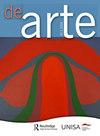The Politics of Memory in South African Art
IF 0.1
0 ART
引用次数: 1
Abstract
ABSTRACT There is a saying attributed to Winston Churchill that goes, “History is written by the victors,” indicating that all histories are subjective and biased in some way. This was certainly true for South Africa under the Nationalist regime where the exploits of Afrikaner colonialism were glorified, and the majority of the population were mere “bit players” at best and vilified as savages at worst. Such traumatic histories have been interrogated by Penny Siopis in her “History Paintings” made in the early post-apartheid era which consider the residual effects of a dominant patriarchal and colonial discourse on the lives of black women in South Africa. Like Siopis, Paul Emmanuel and Diane Victor engage with the biased nature of history and memory in the light of post-apartheid dispensation in South Africa and the continuing after effects of our fraught past. This article considers the way these three artists engage with the inherent fragility and bias of memory through the materials they employ as much as the content of their works. I consider selected works by these artists and investigate how they engage with the politics of memory to expose fabrications and redress lacunae in the continuum of contested South African histories. I suggest that their works demonstrate how memories have been manipulated in service to a dominant ideology; in other words, they expose the “politics” of memory by using reconstituted/reworked memories to revisit and restore histories that might otherwise be lost.南非艺术中的记忆政治
摘要温斯顿·丘吉尔说过一句话:“历史是胜利者写的”,这表明所有的历史都是主观的,在某种程度上都有偏见。这对民族主义政权下的南非来说无疑是正确的,在那里,南非白人殖民主义的功绩得到了赞扬,大多数人往好了说只是“小玩家”,往坏了说被丑化为野蛮人。Penny Siopis在她创作于后种族隔离时代早期的“历史绘画”中对这些创伤历史进行了审问,这些绘画考虑了占主导地位的父权制和殖民话语对南非黑人女性生活的残余影响。与Siopis一样,Paul Emmanuel和Diane Victor也参与了历史和记忆的偏见性质,因为南非的后种族隔离制度以及我们令人担忧的过去的持续后遗症。这篇文章考虑了这三位艺术家通过他们使用的材料和作品内容来处理记忆固有的脆弱性和偏见的方式。我考虑了这些艺术家的精选作品,并调查了他们如何参与记忆政治,以揭露捏造的事实,弥补南非历史中存在的缺陷。我认为,他们的作品展示了记忆是如何被操纵以服务于主流意识形态的;换言之,他们通过使用重构/重新构建的记忆来重新审视和恢复可能丢失的历史,从而暴露了记忆的“政治性”。
本文章由计算机程序翻译,如有差异,请以英文原文为准。
求助全文
约1分钟内获得全文
求助全文

 求助内容:
求助内容: 应助结果提醒方式:
应助结果提醒方式:


